Clancy Tucker's Blog, page 18
May 14, 2022
14 July 2022 - THE HIDDEN CANINE ON KOREAN WAR MEMORIAL

THE HIDDEN CANINE ON
KOREAN WAR MEMORIAL
G'day folks,
Those with a sharp eye can find the hidden image of a German Shepherd on the memorial's Mural Wall.It’s easy to get overwhelmed when trying to pack in all the sights while visiting the monuments scattered throughout Washington, D.C. Those on a quick trip to the city will likely breeze through the historical spots without stopping to take in the hidden details.
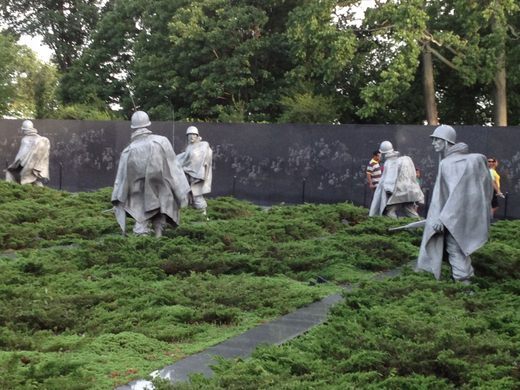


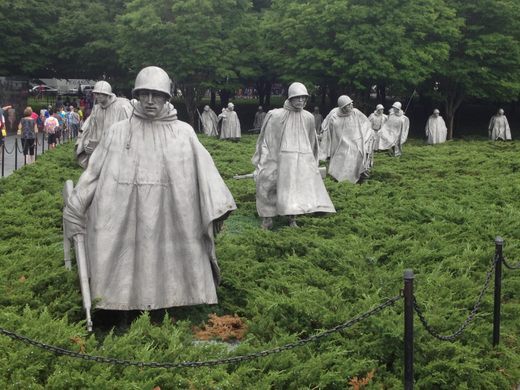
Those who do choose to examine the Korean War Veterans Memorial with an eagle eye will be rewarded with a small canine surprise. If you search hard enough while looking at the Mural Wall, you’ll find a soldier with his German Shepherd.
This particular military dog may not be so easy to spot, as the image is only about two inches tall. Still, trying to find the concealed canine is a powerful experience, as it’ll make you remember the soldiers and animals who served in the war.
The U.S. Army estimates its forces employed around 1,500 dogs during the war. They mainly worked as sentry dogs and were trained to silently warn their human controllers about any possible intruders. The dogs didn’t return home with their handlers after the end of the war, to the great sadness of the men who had grown to love them.


The Mural Wall is one of the many parts of the Korean War Veterans Memorial in Washington D.C. Louis Nelson used over 2,000 photographic images that were sandblasted into 100 tons of polished “Academy Black” granite to create this segment of the iconic monument.
11 July 2022 - LINCOLN MEMORIAL UNDERCROFT
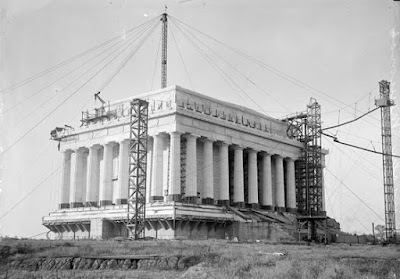
LINCOLN MEMORIAL
UNDERCROFT
G'day folks,
Ascend the 145 white marble steps at the Lincoln memorial, step forward into the shrine room with the seated Great Emancipator, and then direct your gaze down at the floor. Unseen beneath the Tennessee pink marble floor lies a cavernous three-story, 43,800-square-foot basement with architecture that wouldn’t look out of place in a World War II bunker.
Construction began on the Lincoln Memorial in 1914 on the muddy stretch of land known as the Potomac flats. The Army Corps of Engineers had just finished its 40-year-long dredging and landfill project that produced the shoreline we know today. Workers had to dig down 40 feet before work could begin on the marble monument. Here they poured dozens of concrete columns to support the surface structure.
The underground cathedral of concrete pillars was then simply forgotten about until renovations in 1975. According to the Washington Post, in preparation for the Bicentennial, the memorial’s bathrooms were renovated, and the construction crews started peering into the building’s foundation. They brought along their friends, some of whom belonged to the National Speleological Society. The cellar was deemed a cave, complete with stalactites and its own ecosystem (insects, rodents, etc).

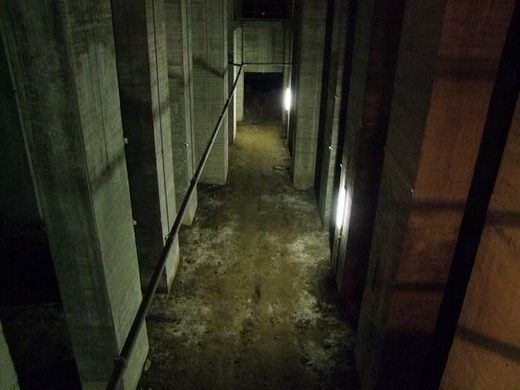
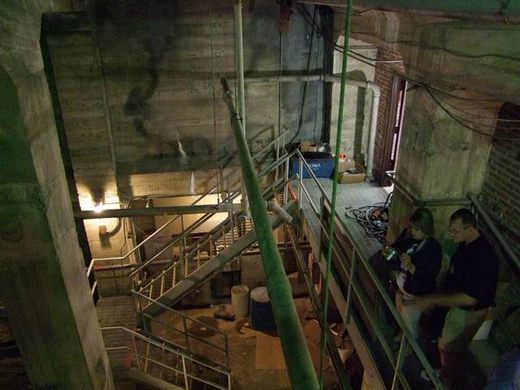
One other interesting find was historical graffiti from way back in 1914. Steven Schorr got to explore the Undercroft as a part of a digital preservation project, and described to NBC how “down in the basement of the Lincoln Memorial, they actually have things written on some of the pillars. The builders actually drew cartoons and they have them covered in Plexiglas.”


For a time, the National Park Service offered flashlight tours of the Undercroft, but they were abruptly halted in 1989 when a tourist noticed asbestos and flagged it for authorities. Over the years there have been several proposals to put the space to some productive reuse. For example, in 1992 head of the Capitol Historical Society Fred Schwengel tried to get the Department of the Interior to open a museum in the Undercroft where they could display Lincoln’s papers and memorabilia. Schwengels proposal died on the vine like all the others in the face of strong opposition from the National Park Service.
That would be the end of the story, except for an announcement in June, 2017 that the NPS now wants to rehab and open up the Undercroft in time for the Lincoln Memorial’s centennial in 2022. Their proposal to the National Capital Planning Commission includes a rendering showing a platform floating out into the underground space that will allow visitors to get a look at the columns and graffiti.
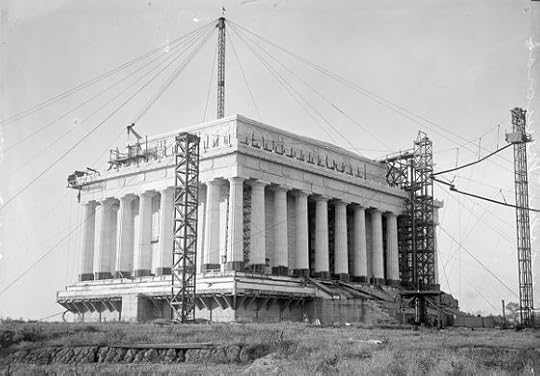
May 12, 2022
4 July 2022 - THE 1929 WALL STREET CRASH
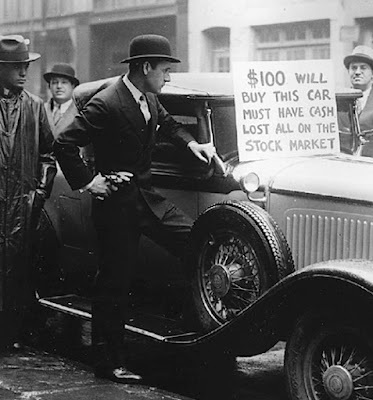
THE 1929 WALL
STREET CRASH
G'day folks,
A record 12,894,650 shares were sold on October 24 1929, as panic gripped the Wall Street stock market in New York. It was to be known as Black Thursday, but far worse was to come.
On October 28 the market went into freefall with losses as high as $5billion being reported. The next day – Black Tuesday – prices completely collapsed amid panic selling, triggering losses of between $10-$15billion. Millions of Americans saw their life savings disappear.
Prices continued to drop, leading to losses of a staggering $30billion by mid-November. The market hit rock bottom on November 23 after which prices began to stabilise, meaning that at last the 1929 Wall Street crash was over. But it took 23 years for the market to recover.
It all came about after a huge economic boom enjoyed during the “Roaring Twenties” and the “Jazz Age.” It was a time of “spend, spend, spend” bolstered by easy credit schemes and widespread borrowing by consumers.
It was also a time of “live now, pay later” and the stock market was no exception. Brokers encouraged buying shares “on margin”, which meant using borrowed money.
As a result, Wall Street saw an extended period of rising share prices, known as the Long Bull Market.
Inevitably, the chickens came home to roost as the economy began to contract. Professional investors then started to sell, causing prices slowly to fall. As they saw what was happening smaller investors, concerned about paying off their loans, also began to sell. So prices on the market fell even further, generating rising panic that led to the Wall Street Crash.
In turn, this brought about the Great Depression with numerous bank closures, mass unemployment, homelessness, hunger and despair for millions of Americans. Peaking in 1933, it would last for ten years until the Second World War broke out in 1939.
This was not the first time that Wall Street had been plunged into turmoil. The first crash of the New York Stock Exchange, known as the Panic of 1901, was caused by a fight for control of the Northern Pacific Railroad. As businessmen E.H. Harriman and James J. Hill battled for the firm, stocks in dozens of other rail companies tumbled, eventually dragging down the whole market.
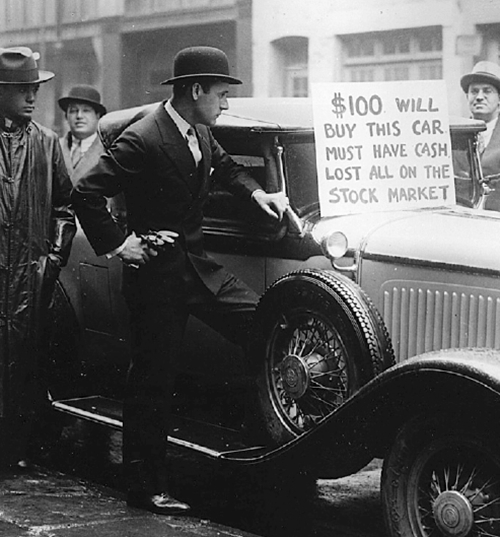
There were further Wall Street crashes in 1907, 1937, 1962, 1987, 1989, 1997, 2000, 2002, 2007, 2008, 2010, 2015 and, of course, the worldwide market slump caused by the coronavirus COVID-19 in 2020.
Long before any of these, the first recorded financial crash came in 1637 when Tulip Mania reached its climax in Holland.
The first tulip bulb was imported into Holland from Turkey in 1593 and after a few years they became a status symbol for the country’s upper classes.
As demand grew, so did the prices and people began to buy and sell tulip bulbs just to make money. As stories spread of huge profits to be made, more and more people jumped on the bandwagon causing the prices to skyrocket.
In 1633, a single bulb of Semper Augustus was selling for an unbelievable 5,500 guilders (about $3,000). By the first month of 1637, this had doubled to 10,000 guilders. Historian Mike Dash in his 1999 book, Tulipomania: The Story of the World’s Most Coveted Flower and the Extraordinary Passions It Aroused, puts this sum in context:
“It was enough to feed, clothe and house a whole Dutch family for half a lifetime, or sufficient to purchase one of the grandest homes on the most fashionable canal in Amsterdam for cash, complete with a coach house and an 80ft (25m) garden – and this at a time when homes in that city were as expensive as property anywhere in the world.”
The buying and selling of bulbs usually took place in taverns but the trading disappeared almost overnight in February, 1637. Most speculators could no longer afford to purchase even the cheapest bulbs and an auction had failed to produce any buyers.
As doubts grew that the prices were sustainable demand disappeared and the bulbs tumbled to a tenth of their former values. Fear and panic spread quickly, causing the bubble to burst in just a few days.
The tulip bulb crash threw the Dutch economy into economic depression that lasted for many years.
2 July 2022 - FRANKLIN ROOSEVELT - 'BRITAIN'S GREATEST FRIEND'
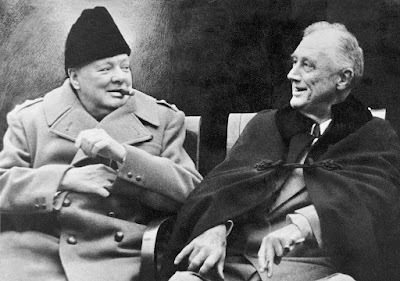
FRANKLIN ROOSEVELT
- 'BRITAIN'S GREATEST FRIEND' -
G'day folks,
Although born 24 years apart, Franklin D. Roosevelt and Theodore Roosevelt had much in common. As well as being distant cousins, they both had wealthy parents, they both went to Harvard University, they both went to Columbia Law School and they both became President of the United States.
But Franklin chalked up a record that no President has matched before or since: he served in office for four consecutive terms and on this day he was nominated by the Democratic Party for his unprecedented third occupancy of the White House.
Like Theodore, Franklin was a descendant of Dutch colonists who settled in America in the mid-17th century. He was born in 1882 at the family’s Hyde Park estate just outside the city of New York, the only child of very wealthy parents.
He was educated mainly by private tutors, then Harvard University before going to the law school at Columbia University. Early on, Franklin began to admire his distant cousin Theodore and their ties were strengthened in 1905 when he married the former President’s niece, Eleanor Roosevelt.
He worked for several years as a clerk in a Wall Street law firm but wanted to enter politics and Theodore's vigorous leadership style with his reforming zeal made him Franklin's role model and hero. A chance came in 1910 when Democratic Party leaders urged Franklin to stand for a seemingly unwinnable State Senate seat.
His branch of the family had always been Democrats so, once he had made sure popular Republican Theodore would not speak against him he accepted the challenge, campaigned strenuously, won, and took his seat, aged just 29.
In 1913, President Woodrow Wilson appointed Roosevelt Assistant Secretary of the US Navy and it seemed that his political star was rising brightly. But fate intervened.
In 1921, at the age of 39, Roosevelt was stricken with poliomyelitis and – in intense pain – he was almost completely paralysed. As he slowly (but never completely) recovered, the torch was taken up by Eleanor. Initially very shy, she turned into an effective public speaker and kept Franklin’s name alive in political circles until he could return.
A limping Roosevelt was elected Governor of New York in 1928 and he went on to win the Democratic Party nomination for President in 1932.
By the time he was inaugurated on March 4, 1933, America was deep into the Great Depression. Most banks had shut down, industrial production had fallen to 56 per cent of its 1929 level, at least 13 million people were unemployed, and farmers were in desperate straits.
But the new President exuded confidence. Millions of Americans listened on the radio to his inaugural address in which he told them: “This great nation will endure as it has endured, will revive and prosper. The only thing we have to fear is fear itself.”
Just as, years before, Theodore had offered the nation a Square Deal, Franklin was to produce the New Deal – a broad array of measures to achieve economic recovery, provide relief to the poor and unemployed, and reform aspects of the economy that Roosevelt believed had caused the collapse.
FDR, as he became known, ran for re-election in 1936 and received the solid backing of farmers, labourers and the poor with 27 million votes. His Republican rival managed fewer than 17 million.
And then came the Second World War . . .
Roosevelt’s second term was due to end in 1941, but with the war under way he wanted to remain as Commander-in-Chief and decided to go for a third term. He stood again in 1944 for the same reason.
(At the time it was traditional not to run for a third term but there was no constitutional law against it. However, in 1947 Congress passed the 22nd Amendment to the US Constitution, which stated that no person could be elected to the office of President more than twice.)
By June 1940, Great Britain stood as the only barrier against total domination of Europe by the Nazis. In less than a year Hitler’s war machine had crushed Czechoslovakia, Hungary, Austria, Denmark, the Netherlands, Belgium, Norway and France.
As Britain stood alone, Prime Minister Winston Churchill made his famous speech declaring: “We shall fight on the beaches; we shall fight in the streets . . .” Afterwards, he reportedly muttered to a colleague: “And we’ll fight them with the butt ends of broken beer bottles because that’s bloody well all we’ve got!”
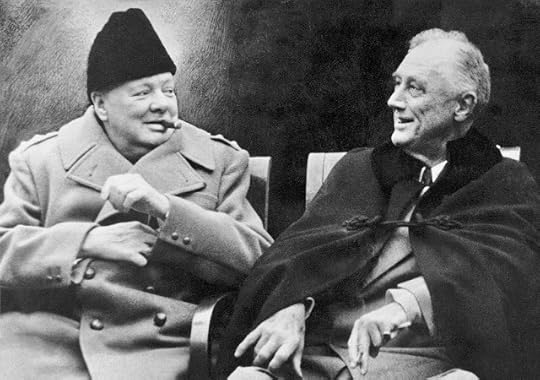
The truth is Churchill knew that the greatest hope for survival lay in the hands of his friend Franklin Roosevelt.
FDR had promised the American people that the country would be kept out of the war but he never stopped fighting against the forces of isolationism and he tried subtly to prepare Americans for the possibility of fighting Germany at some stage.
Less than two months after his re-election in 1940 he gave one of his famous radio “fireside chats”. In it he warned the American people that “if Great Britain goes down, [Hitler] will be in a position to bring enormous military and naval resources against this hemisphere.”
But knowing that a big majority of his countrymen wanted to keep out of the war, FDR instead stressed the importance of helping Britain as it struggled alone. “We are the Arsenal of Democracy,” he said.
And so it was that in March 1941, vast military supplies – including ships and planes – began to be sent to the UK under a Lend-Lease arrangement brokered by Roosevelt.
The question of whether the United States should be directly involved in the conflict was settled nine months later when, on December 7, 1941, Japan attacked the American fleet at Pearl Harbor. FDR famously described it as “a date which will live in infamy” and the US immediately declared war.
The end came for Franklin Roosevelt just three months into his fourth term. He suffered a massive cerebral haemorrhage and died on April 12, 1945 at the age of 63. The war in Europe ended a few weeks later.
Winston Churchill once said of his friend: “Meeting Franklin Roosevelt was like opening your first bottle of champagne. Knowing him was like drinking it.”
Writing at the time of FDR’s death, Churchill said: “It is cruel that he will not see the victory which he did so much to achieve.” The war with Japan concluded in August after Roosevelt’s successor, President Harry Truman, decided to use the atomic bomb at Hiroshima.
Franklin Delano Roosevelt and Winston Churchill forged a bond that historians say saved the world. In his eulogy to the President, the British Prime Minister said: "In FDR there died the greatest American friend we have ever known.”
May 9, 2022
10 July 2022 - HITLER'S BOMBING OF LONDON

HITLER'S BOMBING
OF LONDON
G'day folks,
German aircraft dropped 10,000 bombs on London on this date in one of the worst nights ever during the Battle of Britain.
The nearly four months-long Second World War aerial conflict had been predicted in the summer of that year by Prime Minister Winston Churchill in one of his most famous speeches. He told MPs in the House of Commons:
“The Battle of France is over. The Battle of Britain is about to begin. Upon this battle depends the survival of Christian civilisation. Upon it depends our own British life and the long continuity of our institutions and our Empire.
“The whole fury and might of the enemy must very soon be turned on us. Hitler knows that he will have to break us in this island or lose the war. If we can stand up to him, all Europe may be free and the life of the world may move forward into broad, sunlit uplands.
“But if we fail, then the whole world, including the United States, including all that we have known and cared for, will sink into the abyss of a new Dark Age.
“Let us therefore brace ourselves to our duties, and so bear ourselves that, if the British Empire and its Commonwealth last for a thousand years, men will still say, "This was their finest hour".
Hitler had ordered preparations be made for Operation Sealion – the invasion of Britain. To accomplish it, he demanded that “the Royal Air Force must be eliminated to such an extent that it will be incapable of putting up any sustained opposition to the invading troops.”
And so, as well as attacking shipping convoys, ports and coastal radar stations, the German Luftwaffe made destruction of the RAF its first priority, bombing aircraft bases and communication networks – always in the face of dogged resistance from British Spitfire pilots.

Had this policy continued, the outcome of the war could have been quite different. But in late August, during a night raid, a lost German bomber formation dropped bombs on London by mistake. In retaliation, the RAF next day launched their first bombing raid on Berlin.
Hitler, frustrated by the RAF’s resistance and enraged by its bombing of Berlin, then vowed to destroy London and the spirit of its people. And so the Luftwaffe shifted its focus from attacking aircraft bases to bombing the British capital and other cities.
Though thousands of civilians were to die and countless buildings were to be razed to the ground, the change of German tactics was something like the answer to a prayer for British Fighter Command.
Almost on its knees by this time, the RAF was given time to rebuild its depleted aircraft stocks as newly trained pilots set about proving their superiority in aerial dogfights across the country.
The rejuvenated air force went on to dominate the skies over Britain, forcing Hitler to abandon his invasion plans.
And it was Churchill, once again, who memorably caught the emotion of the time as he paid tribute to the fighter pilots. He told Parliament:
“The gratitude of every home in our island, in our Empire, and indeed throughout the world goes out to the British airmen who, undaunted by odds, unweakened by their constant challenge and mortal danger, are turning the tide of world war by their prowess and their devotion.
“Never in the field of human conflict was so much owed by so many to so few.”
3 July 2022 - St PAUL'S CATHEDRAL, LONDON - A GREAT SURVIVOR
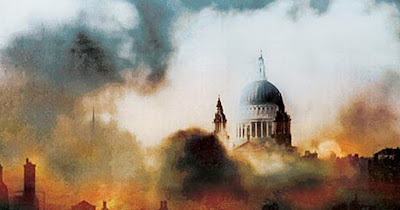
St PAUL'S CATHEDRAL LONDON
- A GREAT SURVIVOR -
G'day folks,
The foundation stone for St. Paul’s, one of the most famous cathedrals in the world, was laid on June 21 1675 as work began to replace its enormous Gothic predecessor, which had been destroyed in the Great Fire of London.
The still celebrated architectural masterpiece designed by Christopher Wren, who was then only 34 years of age, is the fifth church to have stood on the spot since the year 604.
St Paul’s is the burial place of famous Britons such as Horatio Nelson and the Duke of Wellington, who defeated Napoleon at the Battle of Waterloo. It has also been at the centre of royal celebrations such as the diamond jubilee of Queen Victoria in 1897, the silver jubilee of King George V in 1935, and the diamond jubilee in 2012 of the present Queen, Elizabeth II.
The wedding of Prince Charles and Lady Diana Spencer at St. Paul's in 1981 was watched by 750 million people around the world. And it was here that state funerals were held for Sir Winston Churchill in 1965 and Margaret Thatcher in 2013.
The most perilous days for the cathedral came in what became known as The Blitz during the Second World War – the eight-month intense bombing campaign in 1940 and 1941 launched by Nazi Germany against London and other UK cities.
On the night of December 29, 1940, 100,000 bombs were dropped on London causing more than 1,500 fires and turning the City of London’s Square Mile into a furnace. It was later reported that in the 1,000-degree heat, stone walls cracked and crumbled, iron girders twisted, glass melted, and road surfaces burst spontaneously into flames.
The lit-up night sky could be seen 100 hundred miles away on the French coast, and an American war reporter cabled his office: “The second Great Fire of London has begun.”
At the heart of it all was St Paul’s, but aware of its historical, psychological and religious significance, Prime Minister Winston Churchill issued orders that the cathedral must be saved at all costs. He knew how it would lift the spirits of a war-weary public if they could see it had survived the onslaught. Volunteer firefighter Harold Newell needed no telling. “If St Paul’s goes down, then we all go down,” he said.
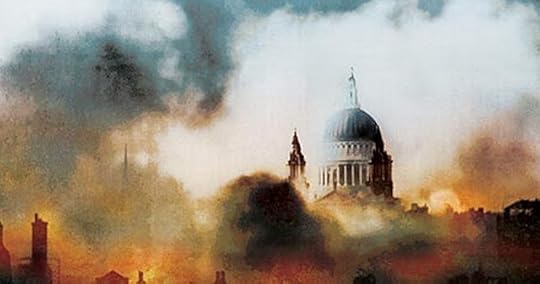
This was the 114th night of the Blitz on London, and standing on a Fleet Street roof, photographer Herbert Mason captured the astonishing sight of the nearby cathedral dome, surrounded by devastation but still intact. His now-famous photograph is reproduced above.
“Through the smoke you could see the fires increasing and, as the evening wore on, an artificial wind sprang through the heat,” he wrote. “It parted the clouds, the buildings in the foreground collapsed. And there, revealed in all its majesty, was St Paul’s.”
The fires were to burn for days but an army of firefighters, men and women, hampered by ruptured water mains, fought to keep 1,700 pumps working flat-out.
In his book, Firefighters And The Blitz, Francis Beckett writes: “While the men manned the pumps, the women were driving petrol carriers, canteen vans and staff cars into the thickest parts of the blaze, ensuring the pumps had fuel to keep going.
“Driving vans laden with cans of petrol through the flames that night was about as dangerous a job as you could do.”
The brave firefighters saved many of London’s historic buildings from total destruction, including, of course, St Paul’s Cathedral.
Sir Christopher Wren died in 1723 at the age of 90 and was the first person to be buried in St Paul’s. His epitaph, set in a great circle in the floor directly under the dome, states in Latin: Lector, si monumentum requiris, circumspice – “Reader, if you seek his monument, look around.”
May 8, 2022
1 July 2022 - EDITH CAVELL - ENGLAND'S HEROINE NURSE

EDITH CAVELL
- ENGLAND'S HEROINE NURSE -
G'day folks,
Every year, two chosen nurses lay a wreath on the statue of Edith Cavell near Trafalgar Square in central London. Meanwhile, some 200 miles north-east of the capital, a memorial service is held in the church at the rural village of Swardestone, where she was born.
Cavell was a nurse working in occupied Belgium during the First World War and was executed by a German firing squad on this day for gradually helping about 200 British and French soldiers to escape the country. She was aged 49.
Her death caused shock and outrage across the world and played a significant part in bringing a disgusted USA into the war.
Cavell, born in 1865, became fluent in the French language which she learnt at school, enabling her to work as a governess for families across Europe, including Brussels.
But after taking care of her sick father she decided to become a nurse and enrolled at the Royal London Hospital. There, Royal Family surgeon Antoine Depage persuaded her to return to Brussels and run a training school for nurses at the Berkendael Medical Institute.
After Germany invaded Belgium in 1914 Cavell’s clinic and nursing school was turned into a Red Cross hospital. She treated wounded soldiers wherever they came from and with her strong religious beliefs is said to have declared: “I can’t stop while there are lives to be saved.”
However, she became involved in an underground group formed to help British, French, and Belgian soldiers reach neutral Holland. They were sheltered at the hospital then given money and guides.
But the suspicious German secret police had been keeping an eye on the hospital and in August 1915, they arrested Cavell and charged her with treason for helping at least 200 soldiers to escape. “Had I not helped,” she said later, “they would have been shot.”
She was kept in solitary confinement for 10 weeks, then at her trial pleaded guilty to the charges against her. She was sentenced to death by firing squad.
Diplomats from the neutral governments of the United States and Spain protested but their efforts were in vain. The night before her execution, Cavell told the Rev. Horace Graham, a chaplain from the American Legation: “They have all been very kind to me here. But this I would say, standing as I do in view of God and eternity: I realise that patriotism is not enough. I must have no hatred or bitterness towards anyone.”
After the war, her body was taken to London’s Westminster Abbey for a state funeral before being buried at Norwich Cathedral near her home town.
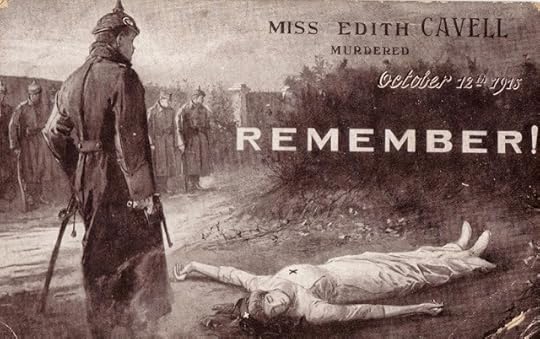
Cavell’s execution led to a strong rise in anti-German feeling in the United States as well as in Britain, where she was idealised as a heroic martyr.
The Germans claimed that Cavell was not just rescuing Allied soldiers, but was also a spy smuggling intelligence back to Britain. Ironically, in 2015, the British Secret Service admitted there was evidence that Cavell was indeed a spy.
Historian Dr. Emma Cavell, a distant relative, has said: “Despite the posters of a helpless young girl lying on the ground while she is shot in cold blood by a callous German, the truth is that Edith was a tough 49-year-old woman who knew precisely the danger she was placing herself in. She admitted frankly what she’d done, and doesn’t appear to have been afraid of the consequences.”
Unlike the Roman Catholic Church, the Church of England has no mechanism for formal canonisation. But it has a Calendar of Saints in which a day is listed for the commemoration of an individual. There, on 12 October, will be found the name of Edith Cavell.
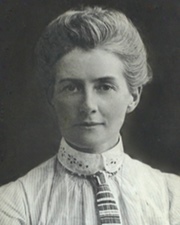
25 June 2022 - WHEN CRICKET'S T20 WAS BORN
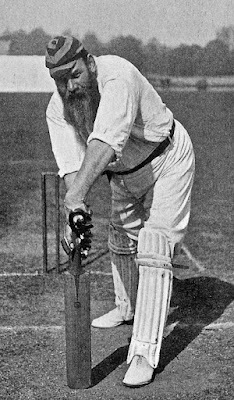
WHEN CRICKET'S
T20 WAS BORN
G'day folks,
Faced with dwindling crowd support and falling sponsorship, in 2003 the England Cricket Board were looking around almost desperately for something to reverse their fortunes.
In response, their marketing manager, Stuart Robertson, proposed a new fast-paced form of the game in which each team would be restricted to 20 overs. The chairmen of the county cricket clubs were sceptical, but voted 11-7 in favour of the idea.
English county teams played the first official Twenty20 matches on 13th June that year, with one of them, Hampshire v Sussex, being shown live on television at 5pm.
An unconvinced Daily Mail commented: “Whoever chose the traditionally unlucky Friday the 13th to launch this bold format had better hope there is nothing to the superstition.
For cricket cannot afford to fail with a new tournament that the authorities hope will tonight attract a whole new audience and revitalise the game.
At just 20 overs apiece, this breakneck, knock-out game is all done in three hours. What on earth would W. G. Grace have thought?
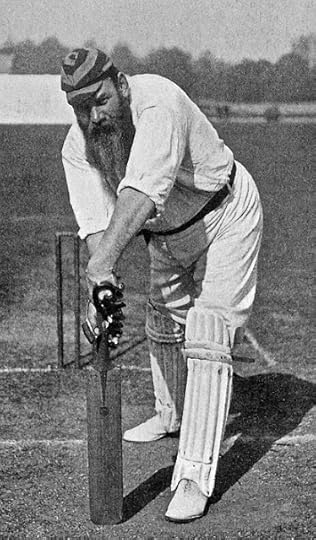
We will never know how the legendary Mr Grace would have reacted, but the rest of the cricketing world enthusiastically embraced the new format, complete with its American-style cheerleaders, flame-throwers and wild celebrations.
It all led in 2007 to the first T20 World Cup (officially the ICC World Twenty20), a fast and furious knock-out contest between 16 international teams.
Many of the wildly enthusiastic supporters might agree with playwright Harold Pinter who once said: “I tend to think that cricket is the greatest thing that God ever created on Earth – certainly greater than sex, although sex isn’t too bad either.”
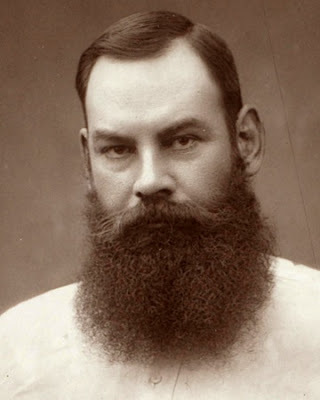
May 6, 2022
29 June 2022 - FLOATING BOOKSTORE IN LONDON

FLOATING BOOKSTORE
IN LONDON
G'day folks,
This 1920s Dutch barge is now a floating bookstore.A most unusual barge floats on Regents Canal, which flows amid the office-littered landscape of King’s Cross. Step aboard the vessel, and you’ll find a trove of literary treasures waiting to be discovered.
Word on the Water, a 1920s Dutch barge, houses an assortment of cult, classic and contemporary fiction and nonfiction books, as well as a large array of children’s books. Its items fill the space both inside and outside the barge, so even those a bit wary of stepping off solid ground can still peruse parts of its collection.

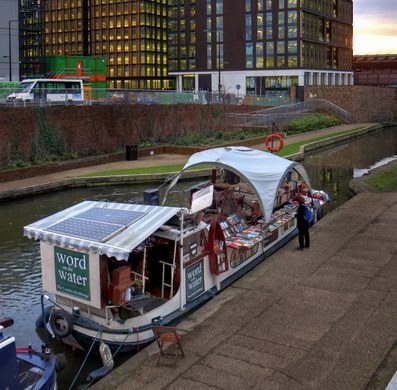




The shop, which the brainchild of Paddy Screech, Jonathan Privett and Stephane Chaudat, has been open for nearly a decade. But it wasn’t always so easy to find. Previously, canal regulations meant the barge had to change location every couple of weeks, popping up wherever its owners could get a spot. After breaking the rules and squatting in one location for six months, the canal trust finally relented and gave the bookshop boat a permanent berth—thanks largely to public outcry and a successful campaign led by the shop’s many supporters.
In its spot along Regents Canal, the barge has become much more than a bookstore. In the winter, its woodburning stove is lit, offering bookworms of all ages a cozy refuge from the dreary cold. In the summer, the barge hosts a variety of performances, bringing anything from folk groups to jazz bands to poetry slams to its rooftop garden.
Word on the Water is a beloved feature of Granary Square, an area developed out of the old King’s Cross train sheds. The particular stretch of Regent’s Canal the barge sits on is home to a small portion of London’s large boating community, some irascible geese and swans, as well as a fine scattering of moorhens.


24 June 2022 - QUIRKY BOOKSTORE IN GREECE

QUIRKY BOOKSTORE
IN GREECE
G'day folks,
Atlantis Books is a quirky bookstore hidden beneath a sea of whitewashed Greek villas.
A mecca for bookworms is buried beneath the waves of whitewashed buildings flowing toward the Aegean Sea. Virtually invisible unless deliberately sought it out, Atlantis Books is a tiny bookstore packed with some of the greatest literary works by authors such as Leo Tolstoy and Samuel Beckett.
Opened in 2004 by a group of young and adventurous college students, the shop offers a plethora of books from international authors translated into English. A small set of stairs framed by vines funnels visitors past a vibrant mural and into the bookstore.



The store is a winding maze of books, all sorted by genre. You’ll find anything from literary classics to intriguing newer titles. Splashed along white walls are quotes and colorful illustrations that swirl around the entire bookstore. There’s also a timeline of the bookstore’s creation running along one wall.
Chairs and tables are tucked into the nooks and crannies of the area, inviting readers to sit down and get lost within the pages of a book. Don’t be surprised if you spot a cat or two snoozing among the stacks. Above ground, the bookstore boasts a patio offering a stunning view of the sparkling sea.




